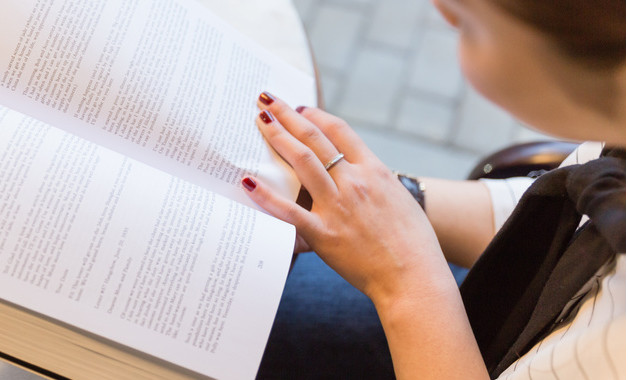
第1篇 英语语法知识点总结:冠词基本用法
冠词基本用法
速记口诀
名词是秃子,常要戴帽子,
可数名词单,须用a或an,
辅音前用a,an在元音前,
若为特指时,则须用定冠,
复数不可数,泛指the不见,
碰到代词时,冠词均不现。
妙语诠释
冠词是中考必考的语法知识之一,也是中考考查的主要对象。以上口诀包括的意思有:①名词在一般情况下不单用,常常要和冠词连用;②表示不确指的可数名词单数前要用不定冠词a或an,确指时要用定冠词the;③如复数名词表示泛指,名词前有this,these,my,some等时就不用冠词。
第2篇 小学英语语法必备:冠词用法总结
一.冠词概述 冠词是虚词,本身不能单独使用,也没有词义,它用在名词的前面,帮助指明名词的含义. 冠词分为不定冠词和定冠词两种。不定冠词仅用在单数可数名词前面,表示“一”的意义,但不强调数目观念,只表示名词为不特定者。 定冠词则表示名词为特定者,表示“这”,“那”,“这些”,“那些”的意思,在可数的单复数名词或不可数名词前面都可以用 二.a和an的区别 不定冠词有a和an两种形式,a用于辅音(不是辅音字母)开头的词前,an用于元音(不是元音字母)开头的词前。 例如:a boy,a university,a european country; an hour,an honour,an island,an elephant,an umbrella 三.不定冠词的用法 1.泛指某一类人、事或物;相当于any,这是不定冠词a/an的基本用法。 2.泛指某人或某物,但不具体说明何人或何物。 3.表示数量,有“一”的意思,但数的概念没有one强烈。 4.表示“每一”,相当于every. 例如,i go to school five days a week.我一周上五天课。 5.用在序数词前,表示“又一”,“再一”。例如,i have three books. i want to buy a fourth one.我已经有三本书,我想买第四本。 6.用在某些固定词组中:a lot(of)许多,大量;after a while过一会儿 四.定冠词的用法 1.特指某(些)人或某(些)物,这是定冠词的基本用法。 2.指谈话双方都知道的人或事物。例如:open the window,please.请打开窗户。 3.指上文已经提到的人或事物。例如:i have a car. the car is red.我有一辆小汽车,它是红色的。 4.指世界上独一无二的事物。 例如:which is bigger,the sun or the earth?哪一个大,太阳还是地球? 5.用在序数词,形容词级前。例如:the first lesson is the easiest one in this book.第一课是这本书最简单的一课。 6.用在由普通名词构成的专有名词前。例如,the great wall 长城,the united states美国 7.用在某些形容词前,表示某一类人。例如:the poor穷人,the blind盲人 8.用在姓氏复数形式前,表示“全家人”或“夫妻俩”。例如:the greens 格林一家或格林夫妻俩 9.用在方位词前。例如:on the left在左边,in the middle of在中间 10.用在乐器名称前。例如:she plays the piano every day.她每天弹钢琴。 11.用在表示海洋,河流,山脉,群岛及国家和*派等名词前。 例如:the black sea黑海,the yangzi river长江 12.用在某些固定词组中:all the same仍然;all the time一直;at the moment此刻;at the same time同时;by the way顺便说;do the shopping/washing买东西/洗衣服;in the morning/afternoon/evening 在上午/下午/晚上;in the open air 在户外,在野外 五.零冠词的用法 1.在专有名词和不可数名词前。例如,class two二班,tian’an men square天安门广场,water水 2.可数名词前已有作定语的物主代词(my,your,his,her等)、指示代词(this/these,that/those)、不定代词(some,any等)及所有格限制时。 例如my book(正);my the book(误) 3.复数名词表示一类人或事物时。 例如,they are teachers.他们是老师。 tigers like meat.老虎喜欢吃肉 4.在星期,月份,季节,节日前。例如:on sunday在周日,in march在三月,in spring在春天,on women’s day在妇女节 (特例:如果月份,季节等被一个限定性定语修饰时,则要加定冠词:he joined the army in the spring of 1982.他在1982年春季参军。) 5.在称呼语或表示头衔的名词前。例如:tom汤姆,mum妈妈 6.在学科名称,三餐饭和球类运动名称前。例如:i have lunch at school every day. 特例:当football,basketball指具体的某个球时,其前可以用冠词:i can see a football.我可以看到一只足球。where’s the football?那只足球在哪儿?(指足球,并非“球类运动”) 7.在表特定的公园,街道,车站,桥,学校等之前。例如:no.25 middle school 8.某些固定词组中不用冠词。 (1)与by连用的交通工具名称前:by bus乘公共汽车;by car乘汽车;by bike骑/坐自行车;by train乘火车;by air/plane乘飞机;by sea/ship乘船,但take a bus,in a boat,on the bike前需用冠词 (2)名词词组:day and night日日夜夜;brother and sister兄弟姐妹;hour after hour时时刻刻;here and there到处 (3)介词词组:at home在家;in surprise惊奇地;at noon在中午;on foot步行;at night在晚上;on duty值日;at work在工作;on time准时;for example例如;in class在上课;on show展览;in bed在床上 (4)go短语:go home回家;go to bed上床睡觉;go to school去上学;go to work去上班;go shopping/swimming/boating/fishing去买东西/游泳/划船/钓鱼 六.用与不用冠词的差异 in hospital住院/in the hospital在医院里 go to sea出海/go to the sea去海边 on earth究竟/on the earth在地球上,在世上 in front of在……(外部的)前面/in the front of在……(内部的)前面 take place发生/take the place(of)代替 at table进餐/at the table在桌子旁 by sea乘船/by the sea在海边 in future从今以后,将来/in the future未来 go to school(church…)上学(做礼拜…)/go to the school(church…)到学校(教堂…)去 on horseback骑着马/on the horseback在马背上 two of us我们当中的两人/the two of us我们两人(共计两人) out of question毫无疑问/out of the question不可能的,办不到的 next year明年/the next year 第二年 a teacher and writer一位教师兼作家(一个人)/a teacher and a writer一位教师和一位作家(两个人
第3篇 冠词知识点总结
冠词知识点总结
说到冠词,大家一定会想到a 、an和the,实际上,冠词就是指这三兄弟。
1. 不定冠词的基本用法:(1)不定冠词有a和an两种:a用于辅音音素开头的词前,例如:a dog, an用于元音音素开头的词前,例如:an apple;(2)用来表示“—”的意思,但不强调数的观念,只说明名词为不特定者。即不具体说明是何人何物。例如:she picked up a book and began to read.(3)不定冠词含有“—”的意思,但数量观念没有one强烈,在句子里边一般可以不必译出,但若有“一个”的意思则译出,(4)一般用在可数名词单数前,指人或事物的某一种类。例如:i am a nurse.(5)用在某些固定词组中,如have a rest,a few,a lot 等。
2. 定冠词的用法:(1)特指某(些)人或某(些)事物。(2)指双方都知道的人或事物,例如:open the door,please. (3)指上文提到的人或事物。(4)用在世界上独一无二的事物前。例如:the sun is bigger than the moon.太阳比月亮大些。(5)用在序数词和形容词最高级前。例如:the first island is the biggest of the three.第一个小岛是三个中最大的。(6)用在形容词前表示一类人,the +形容词指的是一群人,是一种复数含义,所以其后动词应用复数形式。例如:the old are sick.
3. 零冠词的用法 ,就是不用冠词的情况。
1) 国名,人名前通常不用定冠词:england, mary;
2) 泛指的复数名词,表示一类人或事物时,可不用定冠词;
they are teachers. 他们是教师。
3) 抽象名词表示一般概念时,通常不加冠词;
failure is the mother of success. 失败乃成功之母。
4) 物质名词表示一般概念时,通常不加冠词,当表示特定的意思时,需要加定冠词;man cannot live without water. 人离开水就无法生存。
5) 在季节、月份、节日、假日、日期、星期等表示时间的名词之前,不加冠词;
we go to school from monday to friday. 我们从星期一到星期五都上课。
6) 在三餐、球类运动和娱乐运动的名称前,不加冠词;如:have breakfast, play chess
7) 当by与火车等交通工具连用,表示一种方式时,中间无冠词;by bus, by train;
8) 固定短语,如:go to hospital 去医院看病;at home, in class,go to bed等。
常见考法
根据对冠词部分全国各地中考试题的'分析可知,冠词考查主要在单项选择和完形填空题型之中。冠词主要考查的有:
1、 不定冠词、定冠词和零冠词的基本用法。
2、 冠词常见的习惯搭配用法。
3、 部分物质名词抽象名词具体化之后的冠词用法。
4、 冠词的位置
不定冠词a用于辅音音素开头的单词前,an用于元音音素开头的单词前。
典型例题1: ——tina,could you please play____ piano for me while i’m singing?
——with pleasure.
a. a b. an c. the d. /
解析:表示乐器的名词前应用定冠词the 。
答案: c
典型例题2: there is ____“h” in the word “hour”,but____“h” doesn’t make a sound.
a . a, a b. a, the c. the, an d. an, the
解析:这是一道很迷惑人的习题。第一个空很多学生认为“h”是一个辅音字母,所以会填a,但是选择a 或an,看的是音素,即读音,而并不是字母本身,“h”是一个辅音字母,但却是以元音音素开头,所以前面应用an;第二个空“h”第二次出现,所以用定冠词 the 。
答案: d
误区提醒
不定冠词a用于辅音音(而不是字母)开头的单词前,an用于元音音素(而不是字母)开头的单词前,例如上面典型例题2。
第4篇 小学英语语法总结:冠词
一、冠词分类及读法: 英语中冠词有不定冠词和定冠词两种,常放在名词的前面,用来限定名词的意义,起泛指或特指的作用。定冠词the ,不定冠词a/an 二、不定冠词a / an的用法: 不定冠词a / an用在单数名词的前面,a用在辅音开头的词前面; an用在元音开头的词的前面。 a.不定冠词的基本用法: (1) 表示某一个人或东西,但不具体说明何人或何物。如:there is a dog lying on the ground.(有一只狗躺在地上。) (2) 表示某类人或事物,以区别于其他种类。如:a elephant is much stronger than a man.(大象比人强壮多了。)(不能译为:一头大象比一个人强壮。) (2) 表示某类人或事物中的任何一个。如:he is a teacher of english.(他是英语教师。) (4) 表示“一”这个数量。如:there is a table and four chairs in that dining-room.(在那个餐厅里有一张桌子和四把椅子。) (5) 几个用不定冠词的习语:a bit(一点), a little(一点), a few(几个), a lot (许多), a kind of(一种), a pair of(一副、一双), a number of(大量的), a piece of (一张、一片), half an hour(半小时), have a good time(玩得开心), have a cold(感冒), make a noise(发出嘈杂声), have/take a (rest等)(休息)一会儿,等等。 3、定冠词the的用法:定冠词the用在可数名词的单数或复数或不可数的名词前面。 b.定冠词的基本用法: (1) 表示特指的人或事物。如:the man with a flower in his hand is jack..(手上拿着一朵花的男人是杰克) (2) 指谈话双方都熟悉的人或事物。如:look at the blackboard,lily.(莉莉,请看黑板。) (3) 复述前面提到过的人或事物。如:there is a man under the tree. the man is called robert.(树下有个人, 那个人叫罗伯特。) (4) 表示世界上独一无二的事物。如:the earth turns around the sun.(地球绕太阳旋转。) (5) 用在表示方位的名词前面。如:there will be strong wind to the south of the yangtze river.(长江以南地 区将会刮大风。) (6) 在序数词和形容词级的前面。如:who is the first one to go?(谁第一个去?) / of all the stars, the sun is the nearest to the earth.(在所有的恒星之中太阳离地球最近) (7) 常用在乐器名称的前面。如:he began to play the violin at the age of 5.(五岁时他开始拉小提琴) (8) 用在江河、海洋、山脉等名称的前面。如:i have never been to the himalaya mountains.(我从来没有去过喜马拉雅山) (9) 用在含有普通名词的专有名词的前面。如:he is from the united states of america.(他来自美利坚合众国) (10)用在姓氏之前表示一家人。如:the greens are going to mount emei next month.(下个月格林一家要去峨眉山) (11)same之前一般用the。如:lucy and lily look the same.(露西和莉莉看上去长得一样) (12)几个用定冠词的习语:at the same time (与此同时),make the bed(铺床),in the end(最后),all the time(一直),by the way(顺便说一下),on the way(在路上)等等。 c、一些不用冠词的情况: (1) 专有名词和(第一次使用)一些不可数名词时前面通常不用。如:china is a very large country.(中国是个大国) / man needs air and water.(人类需要空气和水) (2) 名词前已有指示、物主或不定代词作定语时不用。如:my pen is much more expensive than yours.(我的钢笔比你的昂贵多了) (3) 周名,月名或季节名前一般不用。如:he was born on monday, february 18,1995.(他出生在1995年二月十八日,星期一) / they usually plant trees on the hills in spring.(春天他们通常在山上植树) (4) (第一次使用)复数名词表示人或事物的类别时不用。如:men are cleverer than monkeys.(人比猴子聪明) (5) 三餐饭前不用。如:we have breakfast at home and lunch at school.(我们在家吃早饭,在校吃午饭) (6) 节、假日前一般不用。如:on children’s day the boys often get presents from their parents.(在儿童节,这些男孩经常得到父母的礼物) (7) 球类名词前不用。如:the children play football on saturday afternoons.(孩子们星期六下午踢足球) (8) 城市的重要/主要建筑物名称前不用。如:they are now at people’s cinema.(他们此刻在人民电*) (9) 一些习惯用语中不用。如 at school; at home; on foot; go to school 等
第5篇 小学英语冠词知识点总结
小学英语冠词知识点总结
冠词一般用在名词的前面,对名词起限定作用,不能离开名词单独存在。
1、不定冠词a,an用在单数可数名词前面,泛指一类人或物中的任何一个。
① a用于辅音音素开头的名词之前。e.g. a bed,a computer,a “u”
② an用于元音音素开头的名词之前。 e.g. anegg,an umbrella,an hour
2、定冠词the用在单数或复数可数名词前,也可用在不可数名词前。
①表示特指的`人或物前。
e.g. the man with a flower in his hand is jack.
②指说话人双方都知道的人或物前。
e.g. lily, close the door, please.
③在上文提到过,第二次又提到的人或物前。
e.g. there is a man under the tree. the man is called james.
① 表示世界上独一无二的事物前。
e.g. the sun is bigger than the moon.
② 用在序数词前面。
e.g. it is the first day of the new term.
③ 用在乐器名称前。
e.g. he often plays the violin at weekends.
④ 用在形容词最高级前。
e.g. spring is the best season in a year.
⑤ 用在由普通名词构成的专有名词前。
e.g. i went to the great wall last week.
⑨用在国家名称的缩写前。
e.g. he is from the uk.
3、零冠词:名词前不用冠词的情况。
在季节、月份、星期、节假日、三餐、球类或棋类运动前,通常不用冠词。
e.g. have breakfast ,play basketball,play chess
第6篇 小学英语语法总结第二章冠词
一、定义 冠词是一种虚词,本身不能单独使用,也没有词义,它用在名词的前面(相当于名词的帽子),帮助指明名词的含义。 二、分类 共3类:定冠词(the definite article),不定冠词(the indefinite article)、零冠词(zero article)。 三、用法 1、定冠词的用法 a 、an与数词one 同源,是'一个'的意思。a用于辅音音素前,而an则用于元音音素前。 (1) 表示某一类人或某事物中的任何一个,经常用在第一次提到某人或某物时,用不定冠词起介绍作用,表示一个。 i gave him a book yesterday .我昨天给了他一本书 i am reading an interesting story . 我在读一则有趣的故事。 (2) 表示人或事物的某一种类, 强调整体, 即以其中的一个代表一类。 a horse is useful to mankind. 马对人类有用。 (3) 不定冠词用在事物的'单位'前,如时间, 速度, 价格等意义的名词之前,表示 '每一'。 we often go to school two times a day. 我们常常一天两次去学校。 (4) 不定冠词用来指某人某物,但不具体说明任何人或任何物。 a boy came to see you a moment ago. 刚才有一个小孩来找你。 (5)在序数词前表示'又一;再一'时。如: i want to read the story a second time 我想再读一遍这篇小说 。 (6) 表示不特定的'某一个'时。如: a mr. smith is calling on the phone. 有一位史密斯先生来电话找你 。 (7)在特定的短语里表示特定的含义,与不可数名词连用,如: have a good time 过得高兴 (8) 一日三餐前有修饰语时。如: -mum, what shall we have for lunch? -jiaozi. -oh, what a wonderful lunch! i enjoy it very much. (9) 在形容词级前表示'非常'时。如: lesson nine is a most difficult lesson, but it isn't the most difficult one. (10)不定冠词用于某些词组中。 a little / a few / a lot / a type of / a pile / a great many / many a / as a rule / in a hurry / in a minute / in a word / in a short while / after a while / have a cold / have a try / keep an eye on / all of a sudden 2.定冠词的用法 定冠词the与指示代词this,that,these,those同源,有'那(这)个' '这(那)些'的意思,但较弱,可以和一个名词连用,来表示某个或某些特定的人或东西。以下为必须加定冠词的情形: (1)在表示双方都明白的人或物的名词之前: take the medicine. 把药吃了。 (2)在上文提到过的人或事的名称之前: he bought a house. i've been to the house. 他买了幢房子。我去过那幢房子。 (3)在指世上独一无二的事物的名词之前: the sun, the sky, the moon, the earth (4)与单数名词连用表示一类事物,如: the fox is cunning .狐狸是狡猾的。 (5)与形容词或分词连用,表示一类人:the rich 富人; the living 生者。 (6)用在序数词和形容词级,及形容词only, very, same等前面: where do you live? i live on the second floor. 你住在哪?我住在二层。 that's the very thing that ineed 那正是我需要的东西。 (7)在表示'...世纪...年代'的结构之前 he began to learn russian in the 1950s. 他在20实际50年代开始学俄语 。 但注意:in one's 50s意为'在某人五十多岁时'。如: he looked quite healthy though he was in his 80s. (8)在比较级的两种句型中: ①表示'越 ......,就越......'时。如: the lighter, the better. 越轻越好 。 ② 表示'两者中比较......'时,用定冠词。如: there are two books on the table. i like the thicker one. (9)用在'动词+sb.+介词+the+身体部位名称'的结构中(注意:介词常用in/on/by)。如: the ball hit me on the back. 球打中了他的头 。 (10) 在表示'计量单位'的可数名词前(注意:介词用by)。如: the workers are paid by the hour/day/month. 按月付给工人工资 . (11)用在某些由普通名词构成的专有名词前:the great wall(长城),the people's park(人民公园)等。 the people's republic of china 中华人民共和国 the united states 美国 (12)用在表示乐器的名词之前: she plays the piano. 她会弹钢琴. the little girl likes to play the violin. 小女孩喜欢拉小提琴。 (13)定冠词用在文艺活动,运动场所的名称前。 they are going to the cinema tonight. 他们今晚要去*看电影。 (14)用在姓氏的复数名词之前,表示一家人: the greens 格林一家人 (或格林夫妇) (15)在方位名词之前 ,如:in the west on the west (16)在某些短语中 in the day, in the morning (afternoon,evening), the day after tomorrow ,the day before yesterday, the next morning, in the sky (water,field,country) in the dark, in the rain, in the distance, in the middle (of), in the end, on the whole, by the way, go to the theatre 3、零冠词(不用定冠词) (1) 在物质名词前,如: water is very important . 水是非常重要的 。 (2) 在抽象名词前,如: failure is the mother of success. 失败乃成功之母。 (3) 复数名词表示人或物的种类时,如: those people are teachers, not students. 这些人是老师,不是学生 . (4) 在有关游戏的名词前,如: do you like to play chess? 你喜欢下棋吗 ? (5) 在'by + 交通工具'的短语里,如: shall we walk or go by bus? 我们乘车还是步行 ? (6) 在国名,人名和地名前通常不用定冠词,如 : england,mary; (7)在年份、季节、月份、节日、 假日、日期、星期等表示时间的名词之前,不加冠词; we go to school from monday to friday. 我们从星期一到星期五都上课。 (8)在称呼或表示官衔,职位的名词前不加冠词; the guards took the american to general lee. 士兵们把这个美国人送到李将军那里。 (9)在三餐、球类运动的名称前,不加冠词 。如: have breakfast,play chess (10) 在某些固定词组中,是否有冠词,意义不同。如: in hospital住院,in the hospital在医院里 in bed在卧床 ,in the bed在床上 in front of在......(外)前面,in the front of 在......(内)前部 go to hospital 去医院看病 go to the hospital 去医院 (并不是去看病,而是有其他目的) 口 诀 泛指用a/ an,单数可数;特指用the,不特不the。 释:1)泛指用a/ an,单数可数--泛指的单数可数名词前要用a/ an。2)特指用the--如果是特指,那么无论是可数名词单数、复数或不可数名词前均要用the。3)不特不the--不特指则不用the,包括泛指的可数名词单数前用a/ an,泛指的可数名词复数前不用冠词,泛指的不可数名词前也不用冠词三种情况。 定冠词:特指双熟悉,上文已提及,世上独一无二,序数级,某些专有名,习语及乐器。 (1)the用在'特指'谈话双方都知道的某个人或某些人或物前。如: where is the teacher? 老师在哪里? (2)the用在上文已提到的人或事物前。如: i can see a cat. the cat is lucy's. 我能看见一只猫,那只猫是露茜的。 (3)the用在世界上独一无二的事物前。如: the earth goes around the sun. 地球围绕着太阳转。 (4)the用在序数词或形容词级前。如: mike is the tallest of the three boys. 迈克是三个男孩中的一个。 (5)the用在由普通名词构成的专有名词前。如:the great wall(长城),the people's park(人民公园 )等。 (6)the用在一些习惯用语中或乐器名词前。如:in the day(在白天),play the piano(弹钢琴)等。 不用冠词:代词限定名词前,专有名词不可数,复数名词表泛指,学科球类三餐饭,季节星期月份前,颜色语种和国名,称呼习语及头衔。 (1)名词前已有作定语用的this, that, these, those, my, your, his, her, our, their, some等限定词时,不用冠词。如:this eraser, her pencil-box, some boxes, those women等。 (2)泛指的不可数名词前一般不用冠词。如:meat, rice, water, bread, tea, milk, juice等。 (3)复数名词表示泛指时,不用冠词。如: 房间里的那些人是医生。 (4)在表示学科的名词前一般不用冠词。如:chinese, english, maths, physics, history等。在三餐饭和球类运动名词前一般不加冠词。如:have breakfast/ lunch/ supper, play basketball/ football等。 (5)在季节、节日、星期、月份前不用冠词。如:autumn, summer, winter, spring, teacher's day, children's day, sunday, february等。 (6)在表颜色、语种和国家名词前不用冠词。如:white, brown, french, australia等。 (7)在表示称呼语的名词之前,以及职务、头衔的名词前不用冠词。如: 格林博士是位科学家。 有水无湖、有球无星、有山无峰、有独无欧(二)、有(足)族无球(运动)、有文无章、学而不专: 1)有水无湖:海、洋、海湾、河等,都用the;单个湖不用the,(但多个湖用the); the red sea,the pacific ocean,the persian gulf, the yangtze river the great lakes(五大湖);lake erie(伊利湖) 2)有球无星:地球,月亮用the;行星不用the: mars,venus; 3)有山无峰:the huangshan mountains(黄山);mount everest(珠穆朗玛峰); mount(or mt.) tai(泰山). 4)有独无欧(偶):独一无二的,the earth,the moon,the sun用the; 欧洲等七大洲不用the. europe,africa,asia,north america,south america,antarctica,oceania 5)有(足)族无球(运动):种族用the:the indians(印第安人);球类运动 baseball,basketball 6)有文无章:历史性的文件用the;小说等的章节不用the the constitution(宪法); chapter one 7)学而不专:学校放在词组的前面时用the;专有名词放在词组的前面时不用the; the university of fudan; fudan university
第7篇 新概念英语语法:定冠词的用法总结
定冠词the与指示代词this,that同源,有'那(这)个'的意思,但较弱,可以和一个名词连用,来表示某个或某些特定的人或东西。
1)特指双方都明白的人或物:
take the medicine.把药吃了。
2)上文提到过的人或事:
he bought a house.i've been to the house.
他买了幢房子。我去过那幢房子。
3)指世上独一物二的事物:
the sun, the sky, the moon, the earth
4)单数名词连用表示一类事物,如:the dollar 美元;
the fox 狐狸;或与形容词或分词连用,表示一类人:the rich 富人; the living 生者。
5)用在序数词和形容词级,及形容词only, very, same等前面:
where do you live?i live on the second floor. 你住在哪?我住在二层。
that's the very thing i've been looking for. 那正是我要找的东西。
6)与复数名词连用,指整个群体:
they are the teachers of this school.指全体教师)
they are teachers of this school. (指部分教师)
7)表示所有,相当于物主代词,用在表示身体部位的名词前:
she caught me by the arm..她抓住了我的手臂。
8)用在某些由普通名词构成的国家名称、**团体、阶级、等专有名词前:
the people's republic of china 中华人民共和国
the united states 美国
9)用在表示乐器的名词之前: she plays the piano.她会弹钢琴。
10) 用在姓氏的复数名词之前,表示一家人:
the greens 格林一家人 (或格林夫妇)
11) 用在惯用语中:
in the day, in the morning (afternoon,evening),the day after tomorrow
the day before yesterday,the next morning,
in the sky (water,field,country)
in the dark,in the rain,in the distance,
in the middle (of),in the end,
on the whole,by the way,go to the theatre
第8篇 新概念英语第二册语法总结:冠词
a wang is looking for you. 一位姓王的同志正在找你。
3、表示数量,有“一”的意思,但数的概念没有one强烈。如: i have a mouth, a nose and two eyes.
4、用于某些固定词组中。如:a bit, a few, a little, a lot of, a piece of, a cup of, a glass of, a pile of, a pair of, have a good time, for a while, for a long time等。
5、用在抽象名词前,表具体的介绍——a + 抽象名词,起具体化的作用。如: this little girl is a joy to her parents. 这女孩对她父母来说是一个乐趣。 it is a pleasure to talk with you. 跟您交谈真是一件愉快的事情。 it is an honour to me to attend the meeting. 参加这个会,对我来说是一种荣誉。
二、定冠词的用法:
1、特指某(些)人或某(些)事物。这是定冠词the的基本用法。如: beijing is the capital of china. the pen on the desk is mine.
2、指谈话双方都知道的人或事物。如: where is the teacher? open the window, please.
3、指上文提过的人或事物(第二次出现)。如: there was a chair by the window. on the chair sat a young woman with a baby in her arms. the baby was thin.
4、用在世界上独一无二的事物前。如:the earth, the moon, the sun。
5、用在序数词和形容词级前。(副词级前的定冠词可省略)如: bob is the tallest in his class.
6、用在某些专有名词前(由普通名词构成的专用名词)。如:the great wall, the summer palace, the science museum, the children’s palace, the party等。
7、用在一些习惯用语中。如:on the day, in the morning (afternoon, evening), the day after tomorrow, the day before yesterday, the next year, by the way等。
8、用在江河湖海、山脉前。如:the yellow river, the pacific ocean, the alps, the himalayas
9、用在报刊、杂志前。如:the people’s daily, the evening paper, the times 泰晤士报
10、表示某一家人要加定冠词。如: the browns are at home to receive visitors today. 布朗一家今天要接待客人。
11、用在形容词前,表某一类人。如:the poor, the wounded, the living, the dead, the rich, the sick等。
12、定冠词可以表示一事物内部的某处。如: the driver always sits in the front of the bus(car).
三、零冠词(即不用冠词):
1、专用名词和不可数名词前。如:china, america, grade one, class two, milk, oil, water, paper, science等。
2、名词前已有作定语用的this, that, my, your, some, any等代词。如: go down this street.
3、复数名词表示一类人或事物时。如: we are students. i like reading stories.
4、节日、日期、月份、季节前。如:teachers’ day, children’s day, national day, in summer, in july等。 today is new year’s day. it is sunday. march 8 is women’s day.
5、在称呼语或表示头衔的名词前,尤其作表语、宾补时。如: what’s the matter, granny? we elected him monitor.
6、在某些习惯用语中的名词前。如:at noon, at night, at first, at last, at most, at least, by bus(train, air, sea), in bed, in time, in front of, go to school, go to bed, go to college, on foot, at table, in ink, in pencil等。
7、在三餐饭和球类运动前。如: she goes to school after breakfast every morning. we are going to play football. we usually have lunch at school.
8、科目前不加。如: we learn chinese, maths, english and some other subjects.
专项训练
1、we can’t live without ______ air. a.an b.× c.the d.some
2、——have you seen ______ pen? i left it here this morning. ——is it ______ black one? i think i saw it somewhere. a.a; the b.the; the c.the; a d.a; a
3、i’ve been waiting for him for ______ hour and ______ half. a.×; × b.the; a c.a; the d.an; a
4、what ______ fine weather we have today! a.a b.× c.some d.an
5、have you ever seen ______ as tall as this one? a.a tree b.such tree c.an tree d.tree
6、children usually go to ______ school at ______ age of six. a.×; the b.a; an c.the; × d.the; the
7、______ himalayas is ______ highest mountain in ______ world. a.×; the;× b.the; the; the c.a; a; a d.×;×;×
8、they each have ______ book. li hua’s is about ______ writer. wang lin’s is on ______ science. a.a; a; × b.the; ×; the c.×; the; × d.a; the; a
9、______ physics is ______ science of matter and energy. a.the; × b.×; × c.×; the d.a; a
10、______ sun rises in ______ east and sets in ______ west. a.a; an; a b.the;×;× c.the; the; the d.a; the; a
(后设答案,大家不要偷看哦~(*^__^*) 嘻嘻……) keys 1、b air是不可数名词。 2、d 此题为97年高考题。根据句意,第一空是泛指,第一次出现;第二空仍是泛指,且表数量“-”。 3、d 元音前用an。 4、b weather是不可数名词。 5、a 此题为85年高考题。泛指。 6、a go to school是固定短语。 7、b 山脉、形容词级及世界上的的名词前加定冠词。 8、a 第一、二空泛指,第三空,science是不可数名词。 9、c 第一空,科目前不加冠词;第二空特指,有定语。 10、c
第9篇 定冠词的用法知识点总结
定冠词的用法知识点总结
2.定冠词的用法:(1)特指某(些)人或某(些)事物。(2)指双方都知道的.人或事物,例如:openthedoor,please.(3)指上文提到的人或事物。(4)用在世界上独一无二的事物前。例如:thesunisbiggerthanthemoon.太阳比月亮大些。(5)用在序数词和形容词最高级前。例如:thefirstislandisthebiggestofthethree.第一个小岛是三个中最大的。(6)用在形容词前表示一类人,the+形容词指的是一群人,是一种复数含义,所以其后动词应用复数形式。例如:theoldaresick.
以上就是为大家整理的定冠词的用法知识点总结:八年级上册英语期中考试复习,大家还满意吗?希望对大家有所帮助!
第10篇 新概念英语第二册语法总结及模拟题:冠词
a wang is looking for you. 一位姓王的同志正在找你。
3、表示数量,有“一”的意思,但数的概念没有one强烈。如: i have a mouth, a nose and two eyes.
4、用于某些固定词组中。如:a bit, a few, a little, a lot of, a piece of, a cup of, a glass of, a pile of, a pair of, have a good time, for a while, for a long time等。
5、用在抽象名词前,表具体的介绍——a + 抽象名词,起具体化的作用。如: this little girl is a joy to her parents. 这女孩对她父母来说是一个乐趣。 it is a pleasure to talk with you. 跟您交谈真是一件愉快的事情。 it is an honour to me to attend the meeting. 参加这个会,对我来说是一种荣誉。
二、定冠词的用法:
1、特指某(些)人或某(些)事物。这是定冠词the的基本用法。如: beijing is the capital of china. the pen on the desk is mine.
2、指谈话双方都知道的人或事物。如: where is the teacher? open the window, please.
3、指上文提过的人或事物(第二次出现)。如: there was a chair by the window. on the chair sat a young woman with a baby in her arms. the baby was thin.
4、用在世界上独一无二的事物前。如:the earth, the moon, the sun。
5、用在序数词和形容词级前。(副词级前的定冠词可省略)如: bob is the tallest in his class.
6、用在某些专有名词前(由普通名词构成的专用名词)。如:the great wall, the summer palace, the science museum, the children’s palace, the party等。
7、用在一些习惯用语中。如:on the day, in the morning (afternoon, evening), the day after tomorrow, the day before yesterday, the next year, by the way等。
8、用在江河湖海、山脉前。如:the yellow river, the pacific ocean, the alps, the himalayas
9、用在报刊、杂志前。如:the people’s daily, the evening paper, the times 泰晤士报
10、表示某一家人要加定冠词。如: the browns are at home to receive visitors today. 布朗一家今天要接待客人。
11、用在形容词前,表某一类人。如:the poor, the wounded, the living, the dead, the rich, the sick等。
12、定冠词可以表示一事物内部的某处。如: the driver always sits in the front of the bus(car).
三、零冠词(即不用冠词):
1、专用名词和不可数名词前。如:china, america, grade one, class two, milk, oil, water, paper, science等。
2、名词前已有作定语用的this, that, my, your, some, any等代词。如: go down this street.
3、复数名词表示一类人或事物时。如: we are students. i like reading stories.
4、节日、日期、月份、季节前。如:teachers’ day, children’s day, national day, in summer, in july等。 today is new year’s day. it is sunday. march 8 is women’s day.
5、在称呼语或表示头衔的名词前,尤其作表语、宾补时。如: what’s the matter, granny? we elected him monitor.
6、在某些习惯用语中的名词前。如:at noon, at night, at first, at last, at most, at least, by bus(train, air, sea), in bed, in time, in front of, go to school, go to bed, go to college, on foot, at table, in ink, in pencil等。
7、在三餐饭和球类运动前。如: she goes to school after breakfast every morning. we are going to play football. we usually have lunch at school.
8、科目前不加。如: we learn chinese, maths, english and some other subjects.
专项训练
1、we can’t live without ______ air. a.an b.× c.the d.some
2、——have you seen ______ pen? i left it here this morning. ——is it ______ black one? i think i saw it somewhere. a.a; the b.the; the c.the; a d.a; a
3、i’ve been waiting for him for ______ hour and ______ half. a.×; × b.the; a c.a; the d.an; a
4、what ______ fine weather we have today! a.a b.× c.some d.an
5、have you ever seen ______ as tall as this one? a.a tree b.such tree c.an tree d.tree
6、children usually go to ______ school at ______ age of six. a.×; the b.a; an c.the; × d.the; the
7、______ himalayas is ______ highest mountain in ______ world. a.×; the;× b.the; the; the c.a; a; a d.×;×;×
8、they each have ______ book. li hua’s is about ______ writer. wang lin’s is on ______ science. a.a; a; × b.the; ×; the c.×; the; × d.a; the; a
9、______ physics is ______ science of matter and energy. a.the; × b.×; × c.×; the d.a; a
10、______ sun rises in ______ east and sets in ______ west. a.a; an; a b.the;×;× c.the; the; the d.a; the; a
(后设答案,大家不要偷看哦~(*^__^*) 嘻嘻……) keys 1、b air是不可数名词。 2、d 此题为97年高考题。根据句意,第一空是泛指,第一次出现;第二空仍是泛指,且表数量“-”。 3、d 元音前用an。 4、b weather是不可数名词。 5、a 此题为85年高考题。泛指。 6、a go to school是固定短语。 7、b 山脉、形容词级及世界上的的名词前加定冠词。 8、a 第一、二空泛指,第三空,science是不可数名词。 9、c 第一空,科目前不加冠词;第二空特指,有定语。 10、c
第11篇 新概念英语第三册语法总结:冠词
不定冠词:
不定冠词'a'用来表示可数名词的单数形式,用于辅音音素前,an用于元音音素前。 如:a person, a day, an hour, an old man...
定冠词用法:
1.用于双方都知道的名词前:please clean the classroom.
2.用于单数名词前,表示一类人或物: the horse is a useful animal.(马是有用的动物) this is a very hard job for the teacher.(对于老师这是一项很难的工作。)
3.用于世界上独一无二的东西前:the sun, the spring.
4.用于方位名词前:people in the west like coffee very much.
5.用于乐器名词前:play the violin
6.用于计量单位前:gasoline is sold by the gallon.
7.形容词级和序数词前: this is the easiest way to work out the problem.









